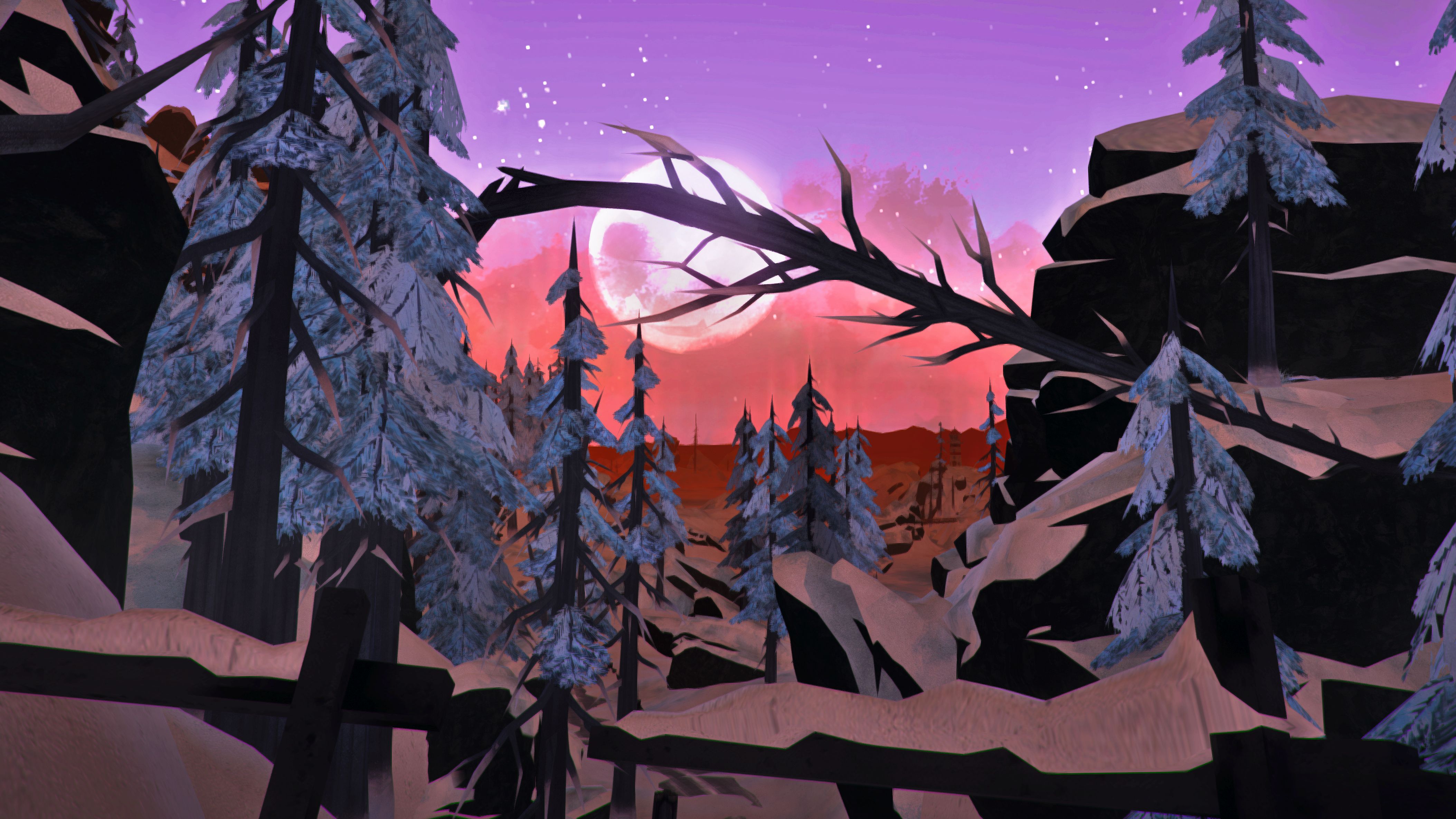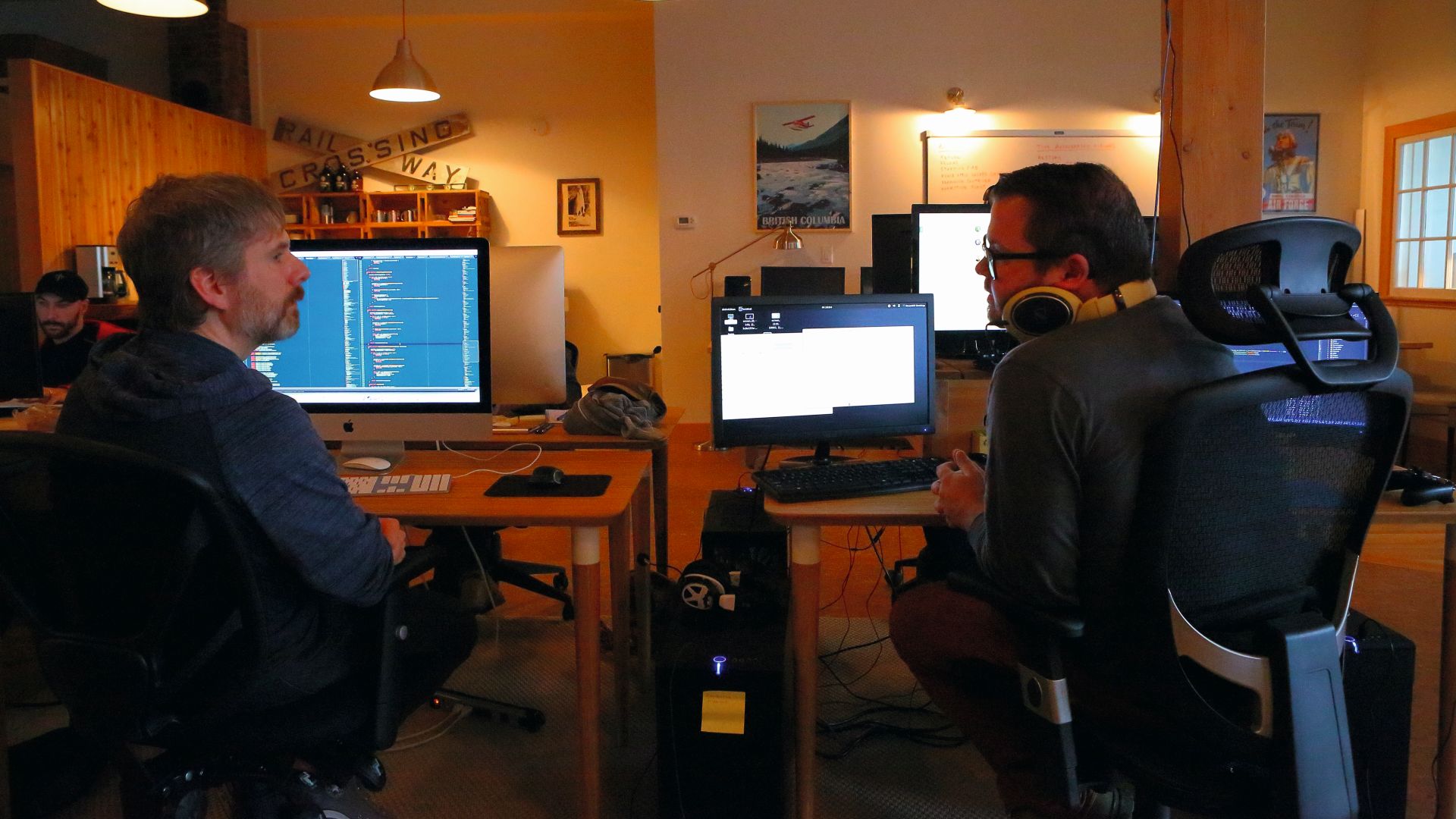Creating a killer wilderness in The Long Dark

This article was originally published in PC Gamer issue 288. For more quality articles about all things PC gaming, you can subscribe now in the UK and the US.
Survival games are bigger than ever on PC, but it’s a saturated market. For every DayZ there are dozens of unimaginative, derivative zombie games released to exploit this sudden surge in popularity. Sitting quietly among all this chaos is The Long Dark. It’s a survival game, sure, but one that follows its own path, making no attempt to ape its peers. It’s a philosophy that mirrors that of the studio making it. And the result is one of the most interesting, stylish and understated survival games you can play today.
“I wanted creative freedom and to get closer to the craft,” says Raphael van Lierop, founder and creative director of Hinterland, the studio in question. “When you run big projects you feel like you spend more time wrangling meetings than making games.” The creation of Hinterland was a chance for van Lierop to call the shots without having to worry about quarterly earnings reports or being pressured into removing risky features. “It’s scary as hell, but it’s thrilling. We could never have made The Long Dark with a publisher.” The decision to base Hinterland on Canada’s Vancouver Island—an unusual setting for a game studio—was a personal one.
“My wife and I didn’t want to raise our family in the city,” van Lierop explains. “But once we’d established ourselves here, it became about not wanting to give up on my passion for making games.” The studio is located in a small frontier mining town at the foot of a mountain range, and surrounded by forested foothills, hiking trails, and a glacier-fed lake. It’s the perfect place to develop a game like The Long Dark, which is itself set in a fictional slice of snowy, rugged Canadian wilderness.
Leaving the bustle of the city behind, and the freedom that brings, is an important part of Hinterland’s philosophy as a studio. “The mental and emotional process of abandoning urban life, and the relative safety of that job market, mirrors the process of us wanting to create something with an independent spirit outside of the mainstream,” van Lierop tells me. “Our studio is in a literal and figurative hinterland.”
Warren Heise, who left a job at BioWare to join Hinterland as The Long Dark’s user interface artist, jumped at the chance. “While it was difficult to leave my friends at BioWare, it was time for me to move on to new challenges,” he says. “Two of my biggest passions are spending time in nature and making games, and when I found out about the project Hinterland was working on, I just knew I had to be a part of it.”

It’s a small team, but brimming with talent and experience. Joining Heise and van Lierop is Alan Lawrence, technical director, who previously worked on Saints Row and Red Faction for Volition. Writer Marianne Krawczyk won a BAFTA for her God of War II script and co-wrote Rockstar’s L.A. Noire. Environment art lead Eric Gabas has worked as a CG artist on Hollywood films including Cloud Atlas. And industry veteran Ken Rolston was the lead designer on Morrowind and Oblivion at Bethesda.
Keep up to date with the most important stories and the best deals, as picked by the PC Gamer team.
This combined expertise has resulted in a game that stands out among an increasingly crowded survival genre. There are no zombies or mutants: nature is, as it would be in a real survival situation, your greatest enemy. There are guns, but ammo is severely limited, and used primarily for hunting. And the visual design is boldly stylised, looking almost like a painting come to life. “Most of the other survival games on PC are basically shooters with survival elements added,” says van Lierop. “But The Long Dark is more like an exploration game with survival elements added.”
There are no zombies or mutants: nature is, as it would be in a real survival situation, your greatest enemy.
In many ways, Heise thinks, it’s breaking new ground in the genre. “A beautiful, stylised natural setting, game systems that reflect the challenges and risks of surviving in a harsh winter environment, and a conspicuous lack of supernatural enemies are a few things that set it apart from the crowd.”
Something else that sets The Long Dark apart is its quiet, melancholy tone. Hinterland wants the game to be as beautiful, haunting, and thoughtful as it is harrowing. This means, in some cases, realism has to be side-lined to maintain that feeling. “The game is built around wanting to present the player with interesting choices, not trying to create an incredibly realistic survival simulation,” says van Lierop. “Our goal is to create an experience that elicits strong emotions from players.”
I ask him about the challenges of balancing realism and fun. “We talk a lot about what is compelling, interesting, logical, beautiful, and fair,” he says. “But we almost never talk about fun. I think it’s too shallow a concept to evaluate against, as it limits you to a relatively small set of experiences.” Instead, Hinterland wants players to feel a sense of accomplishment by putting them in challenging situations, then giving them the tools to work their way out of them. It’s not really a game about having fun: it’s more about mastery and the satisfaction that comes with that.
If it’s set in space, Andy will probably write about it. He loves sci-fi, adventure games, taking screenshots, Twin Peaks, weird sims, Alien: Isolation, and anything with a good story.


